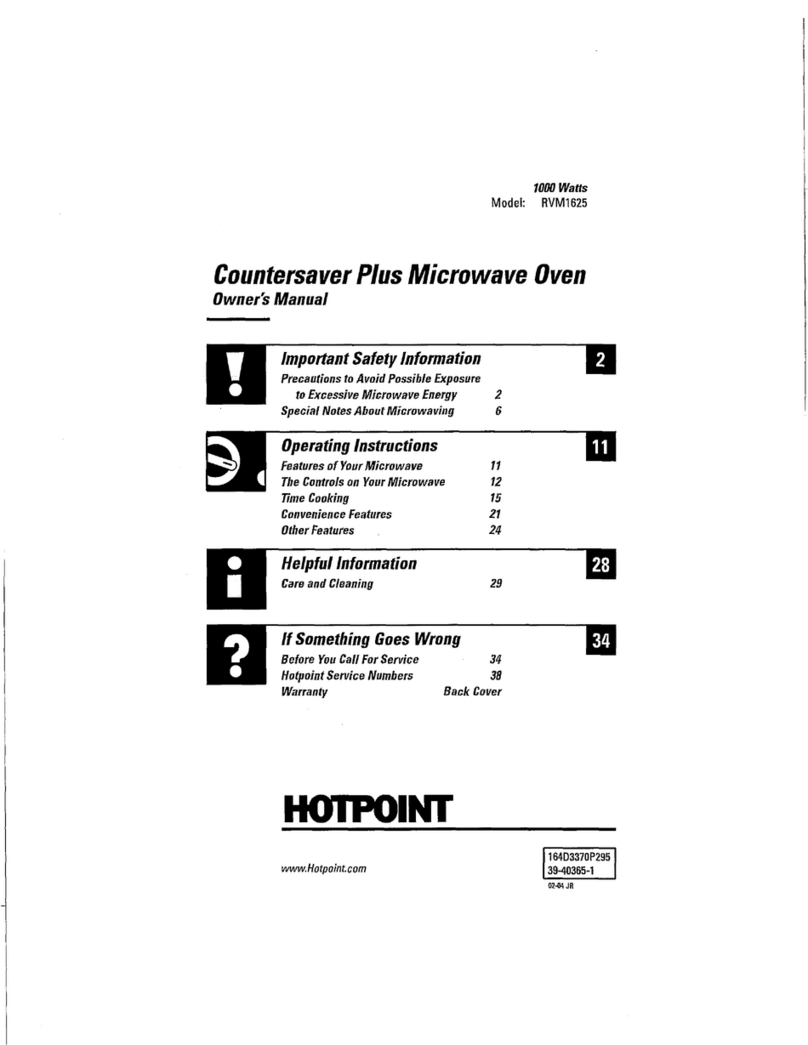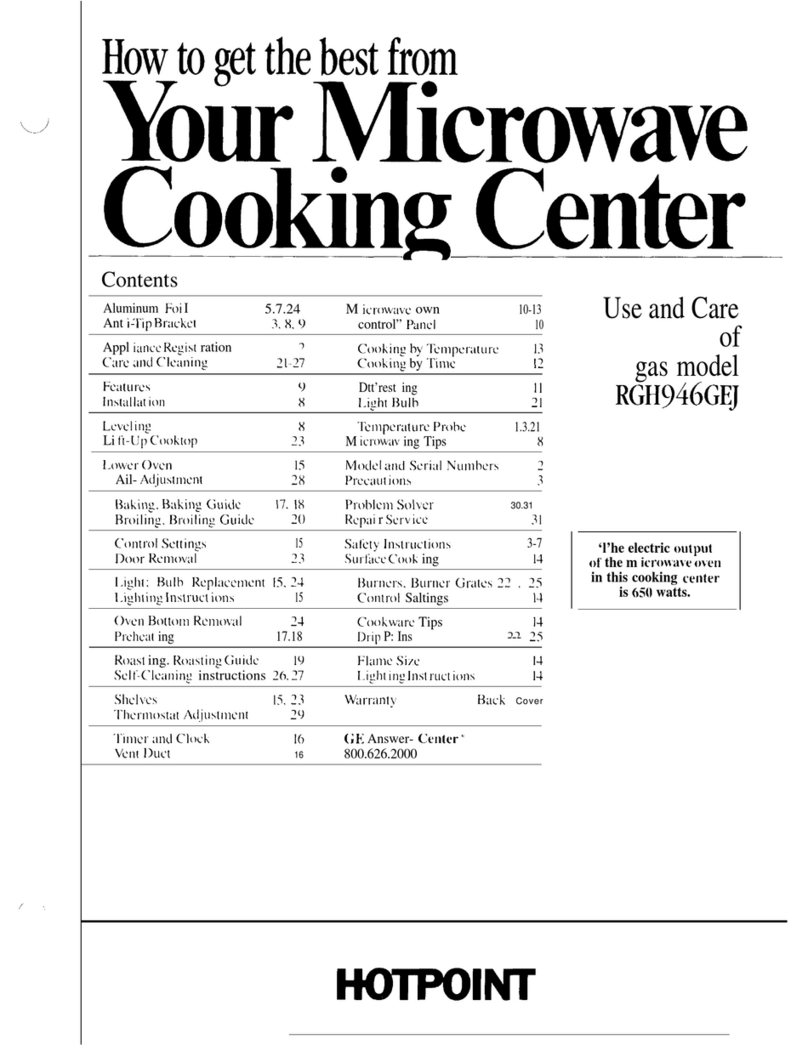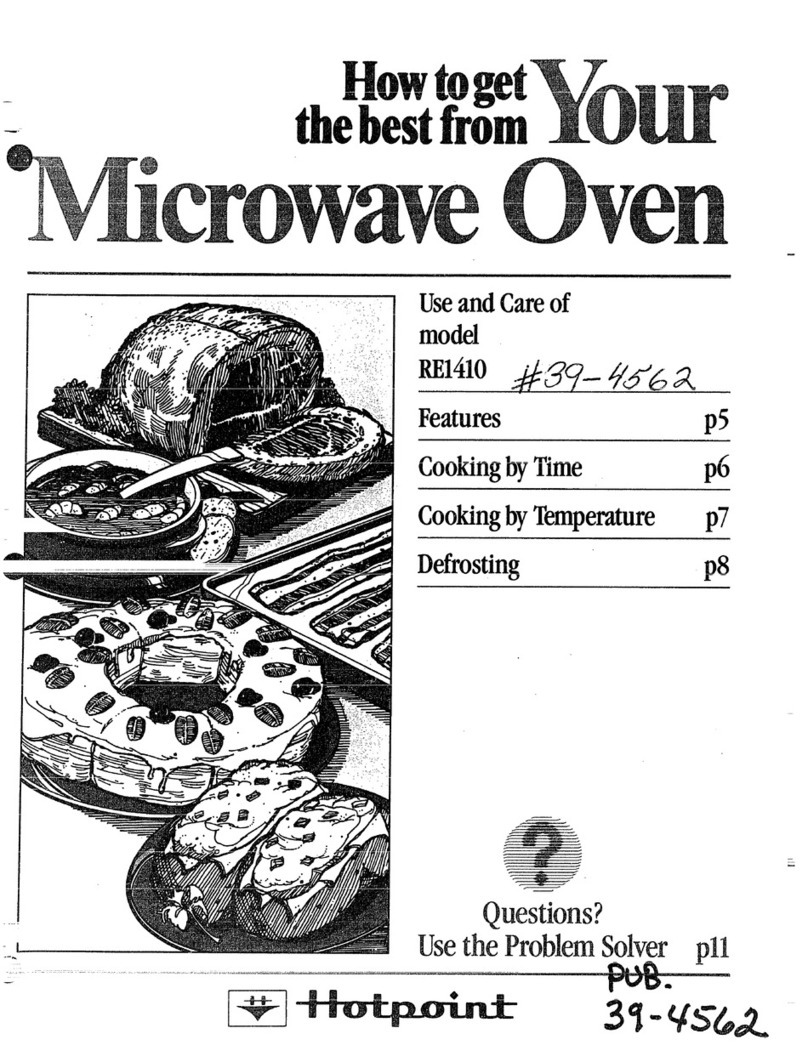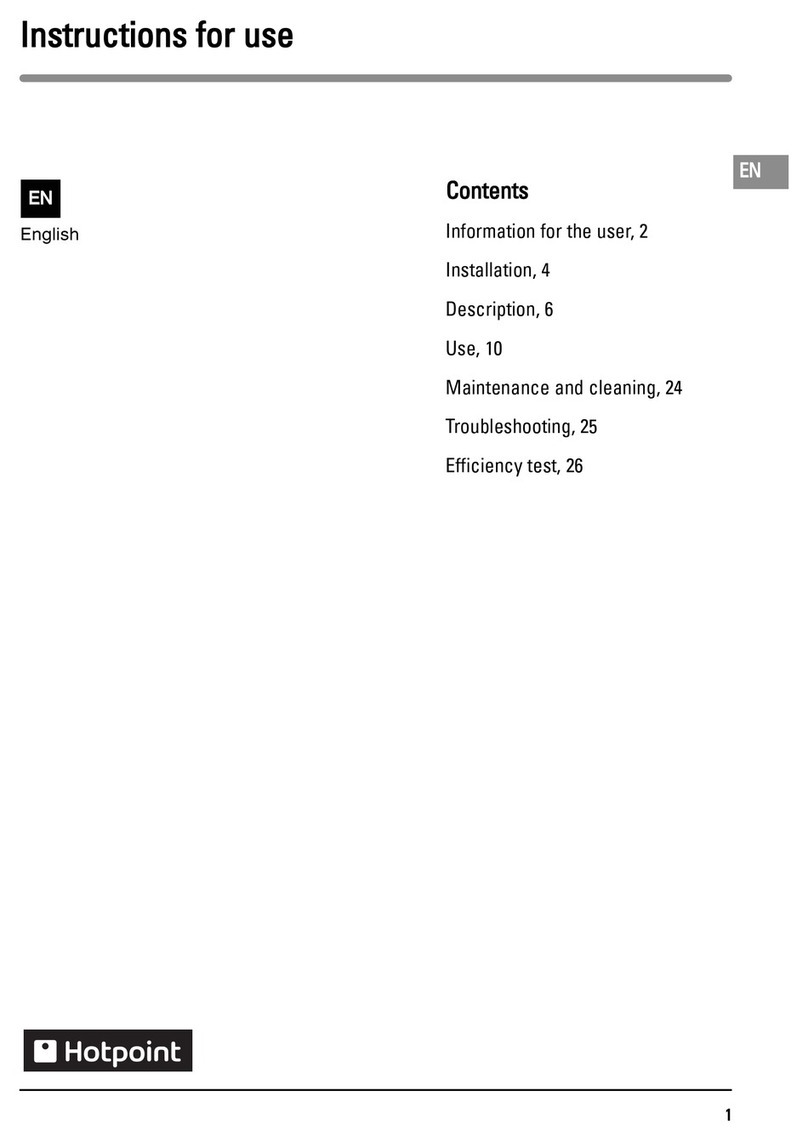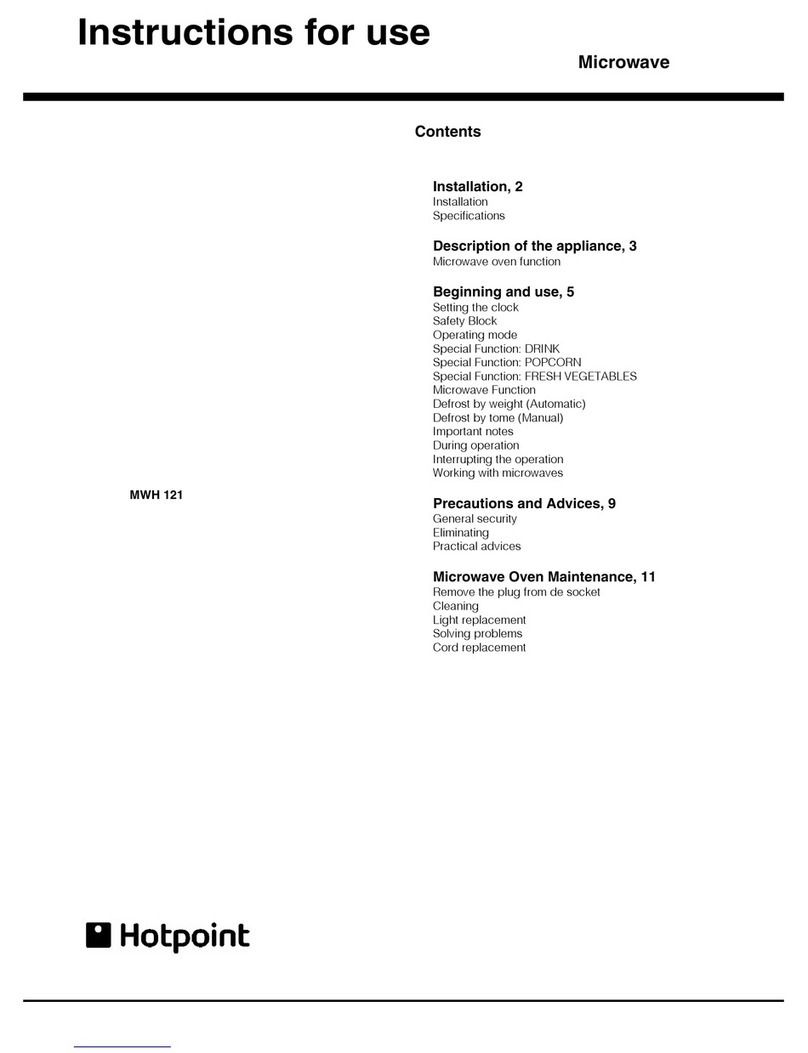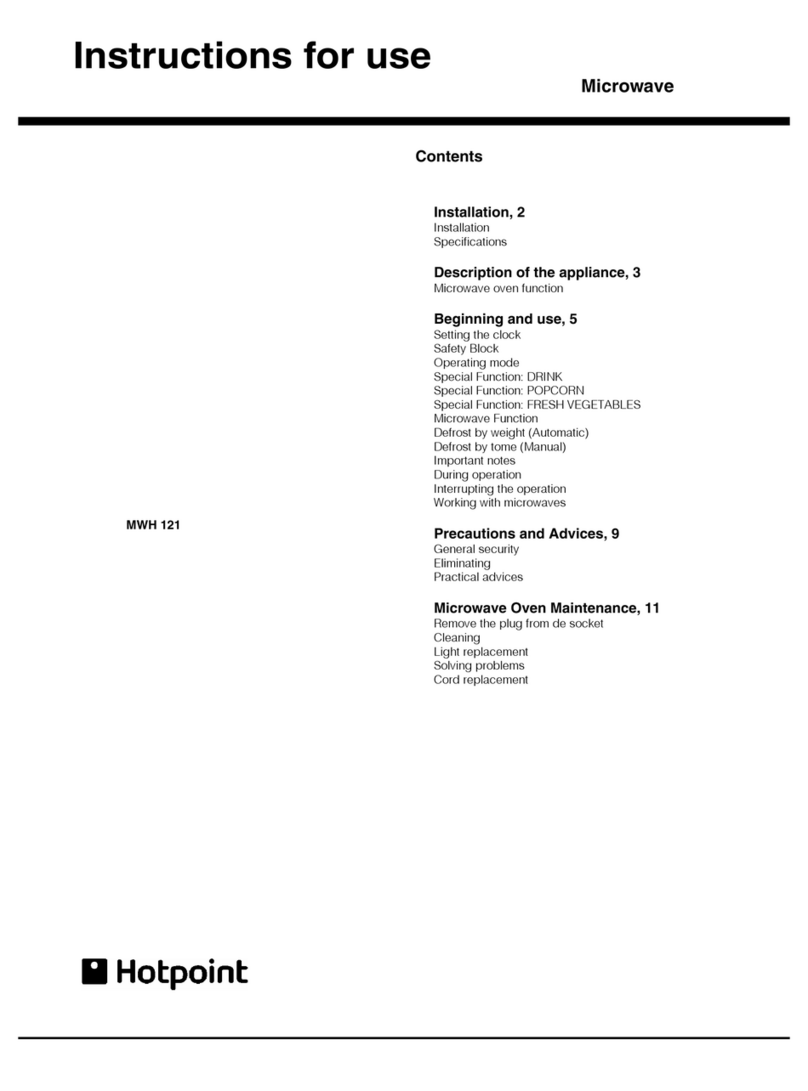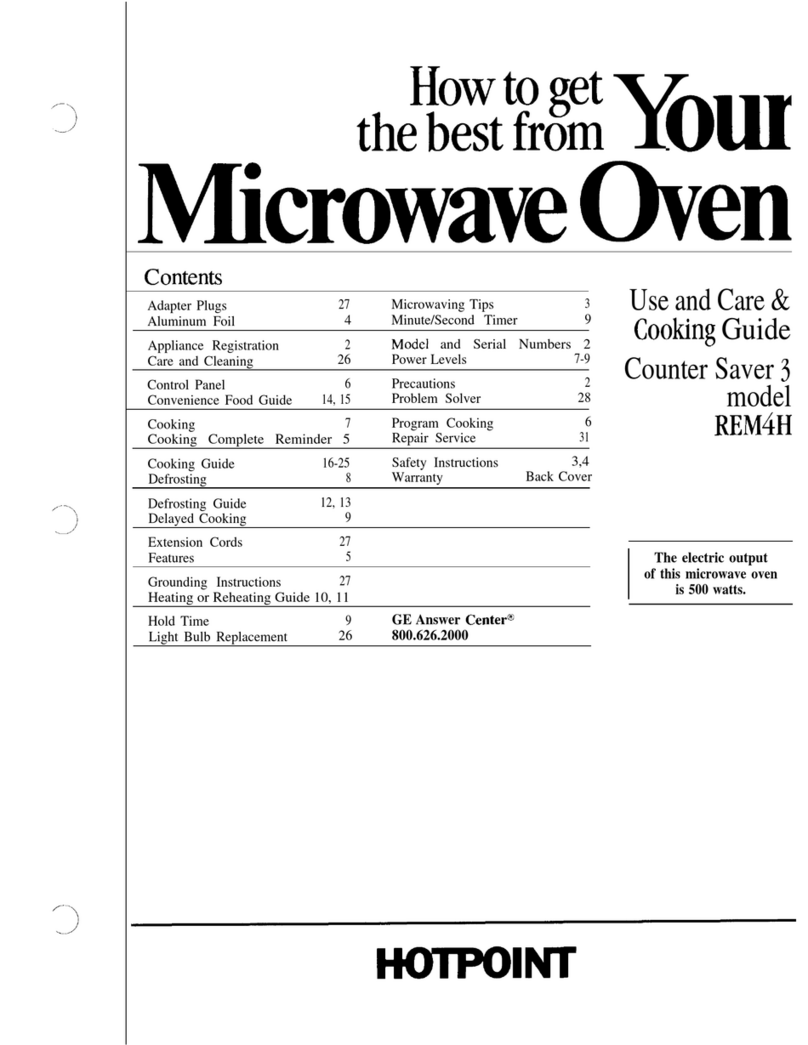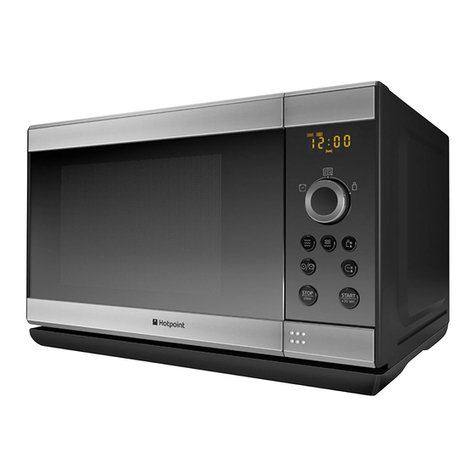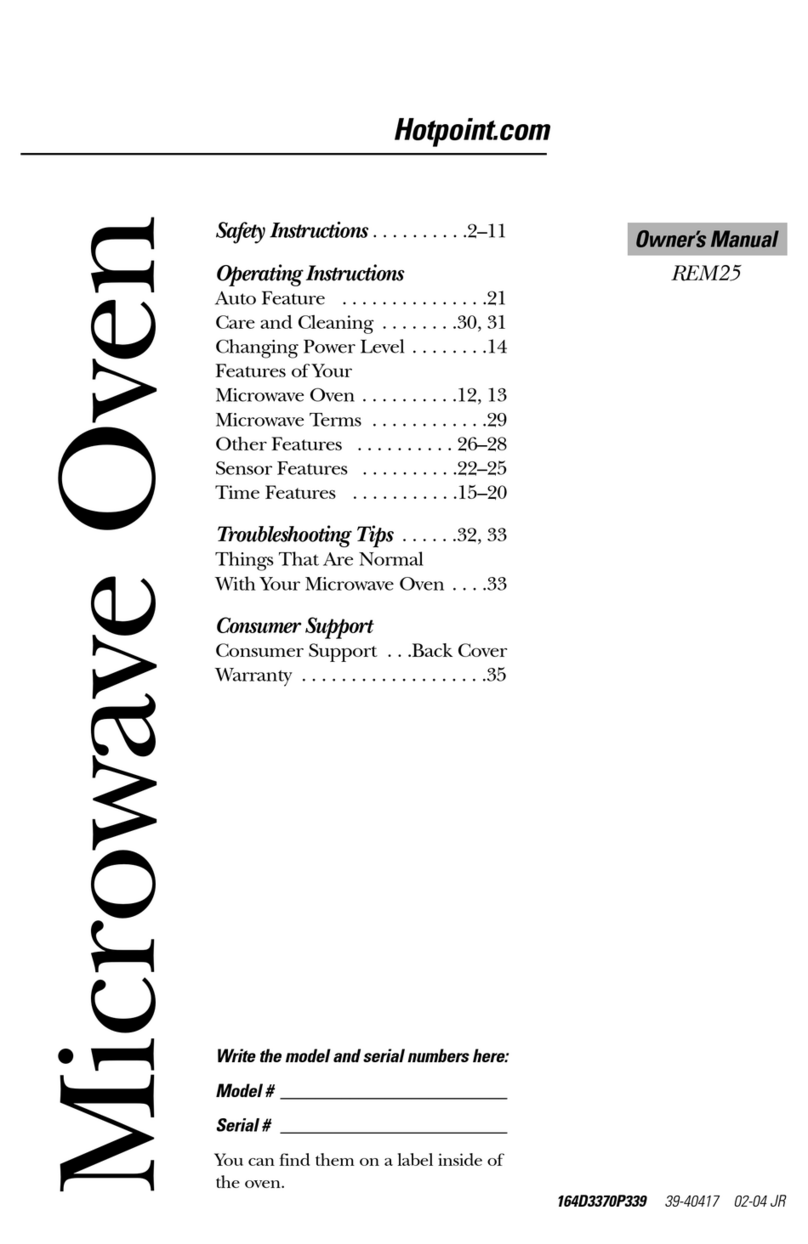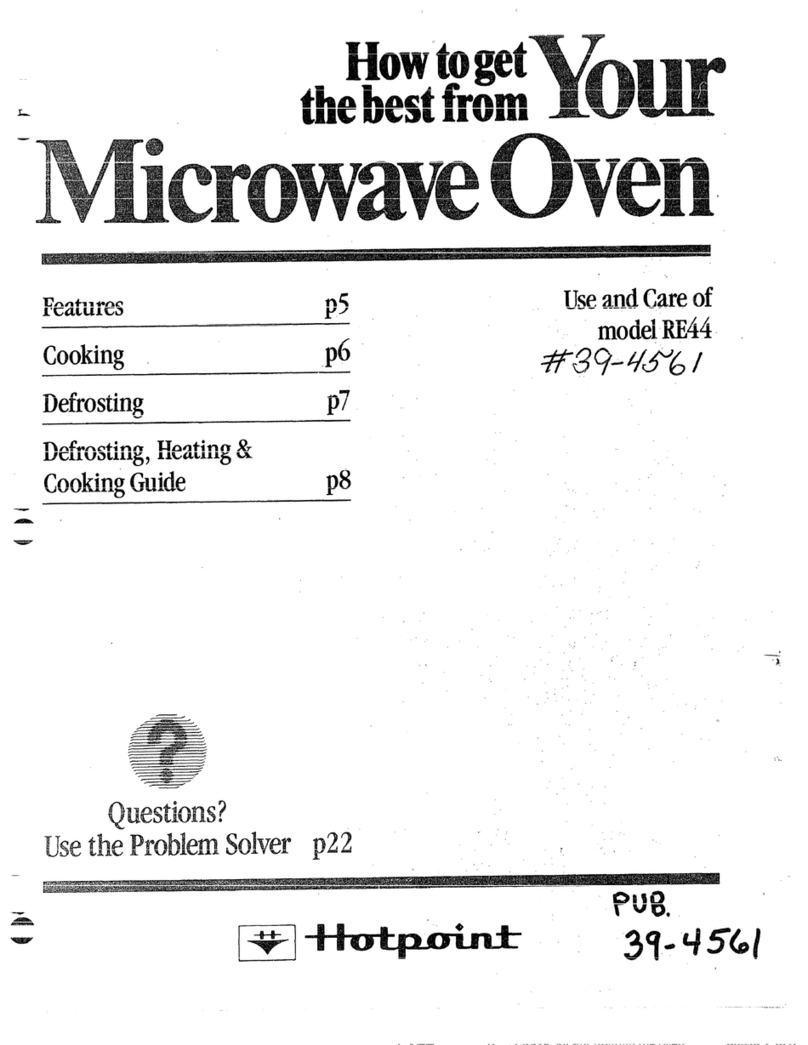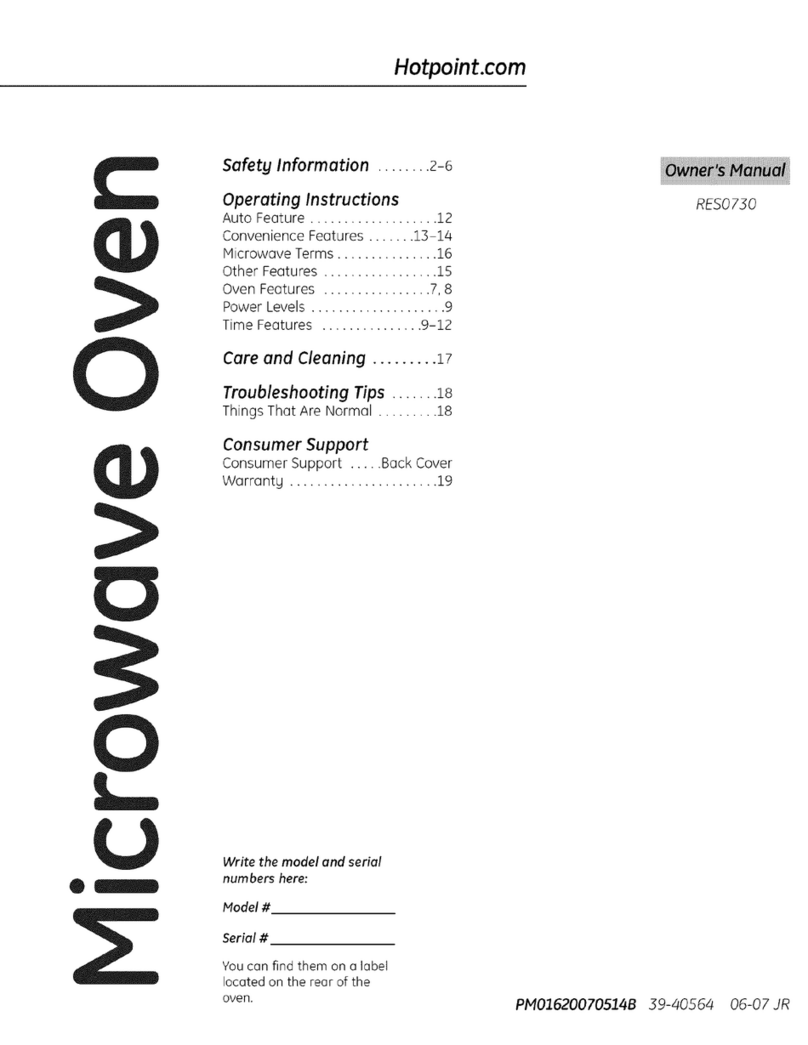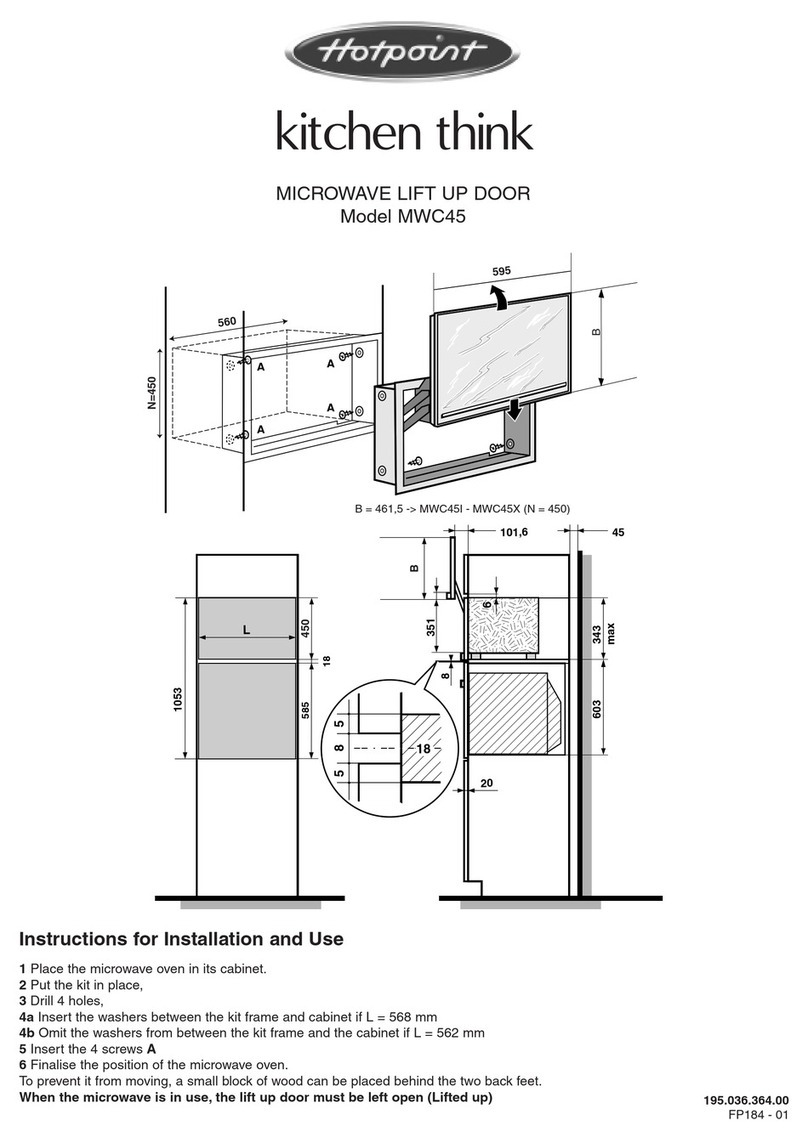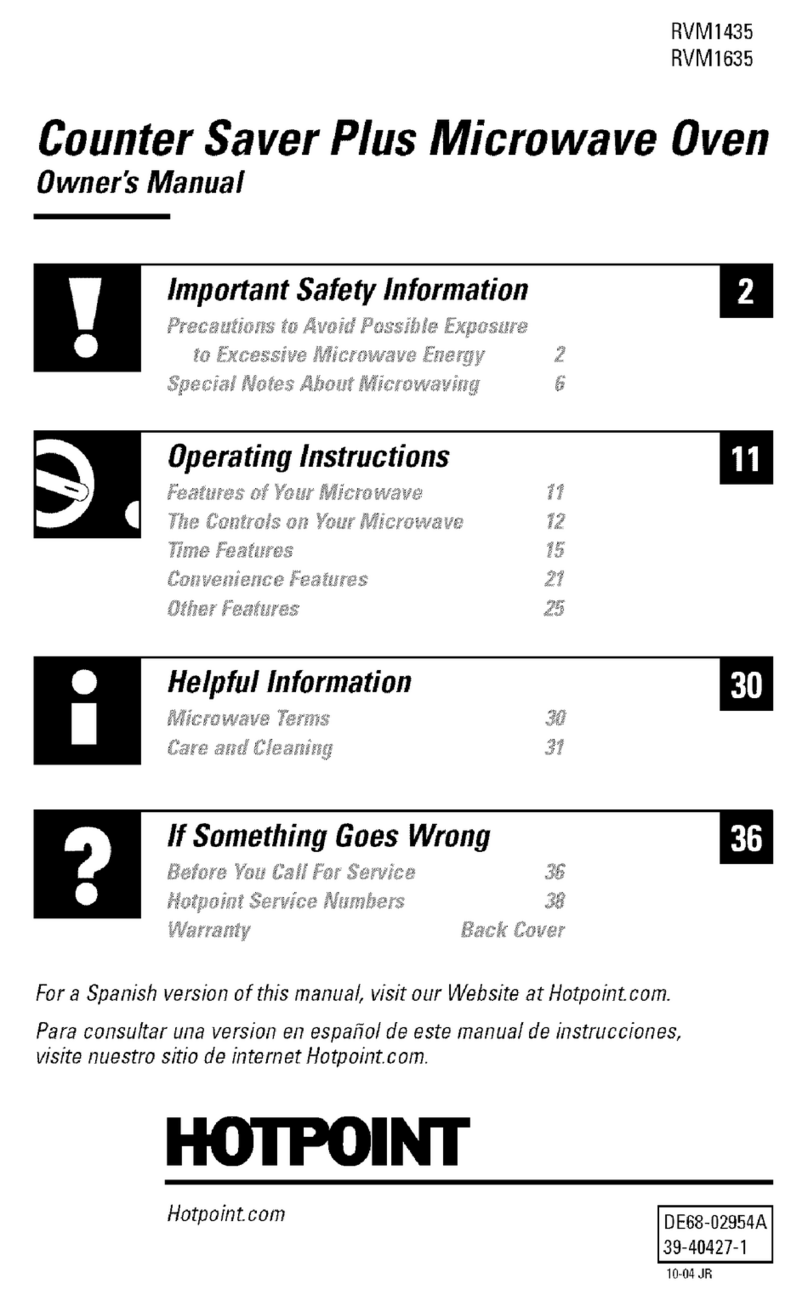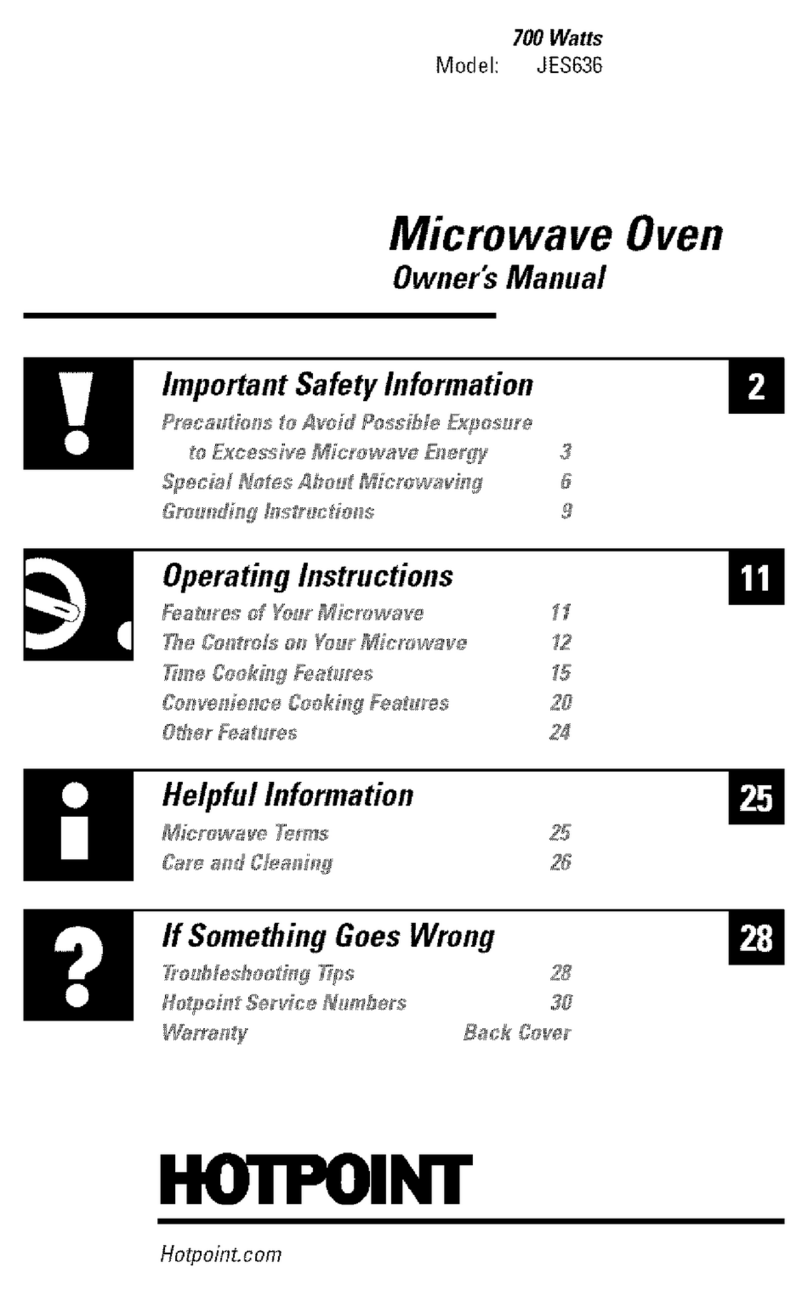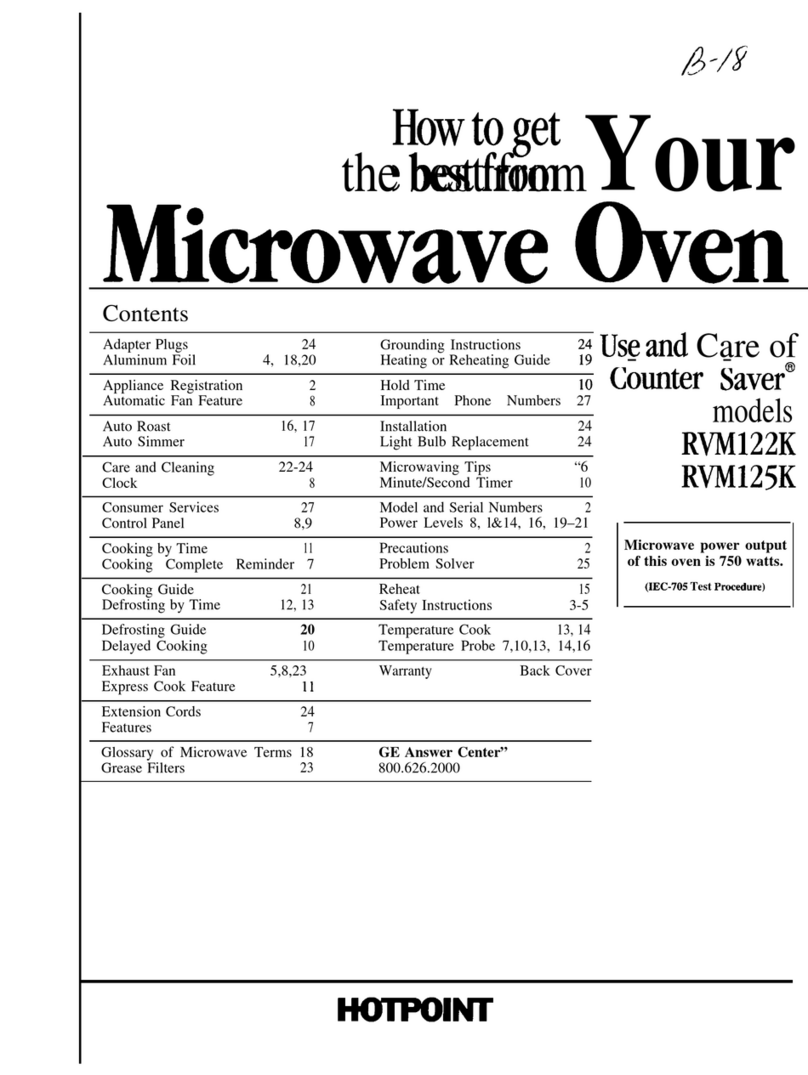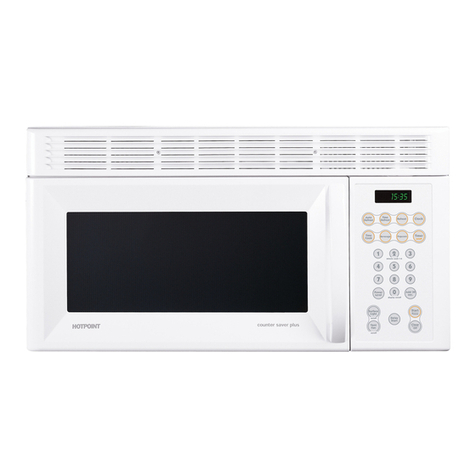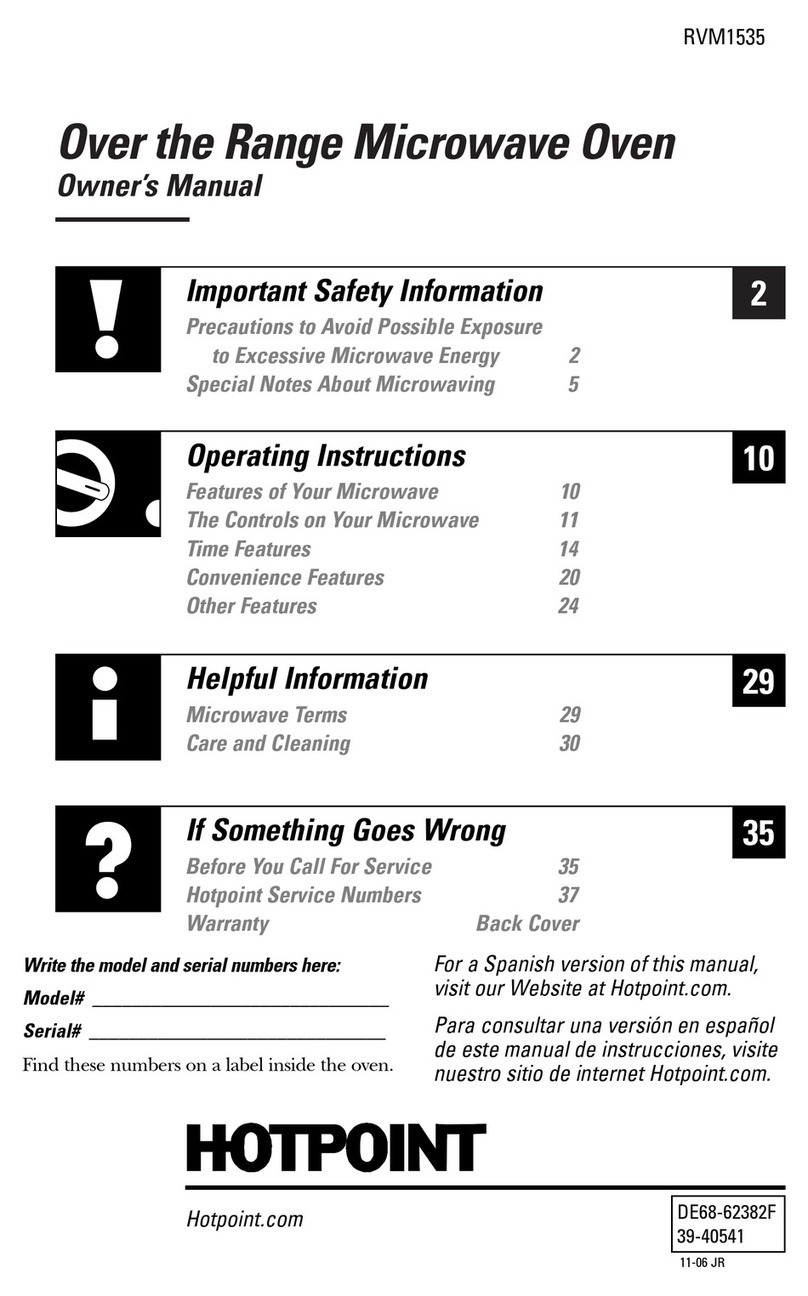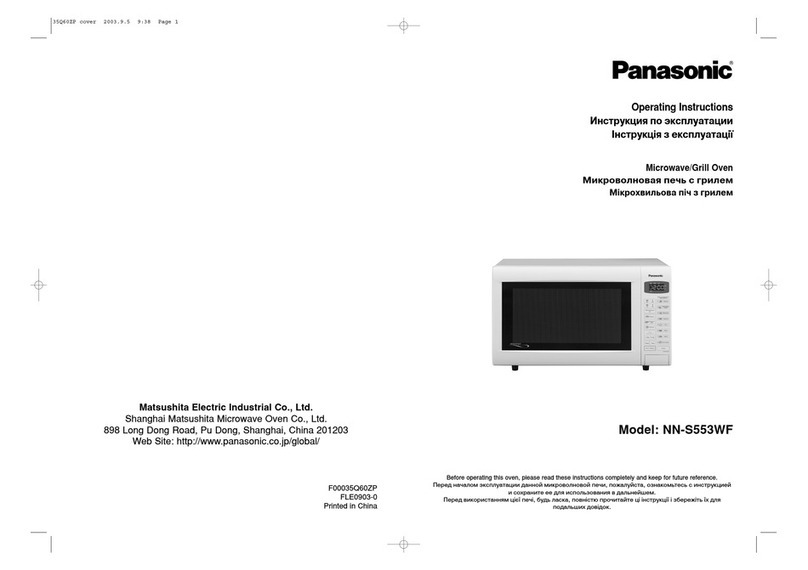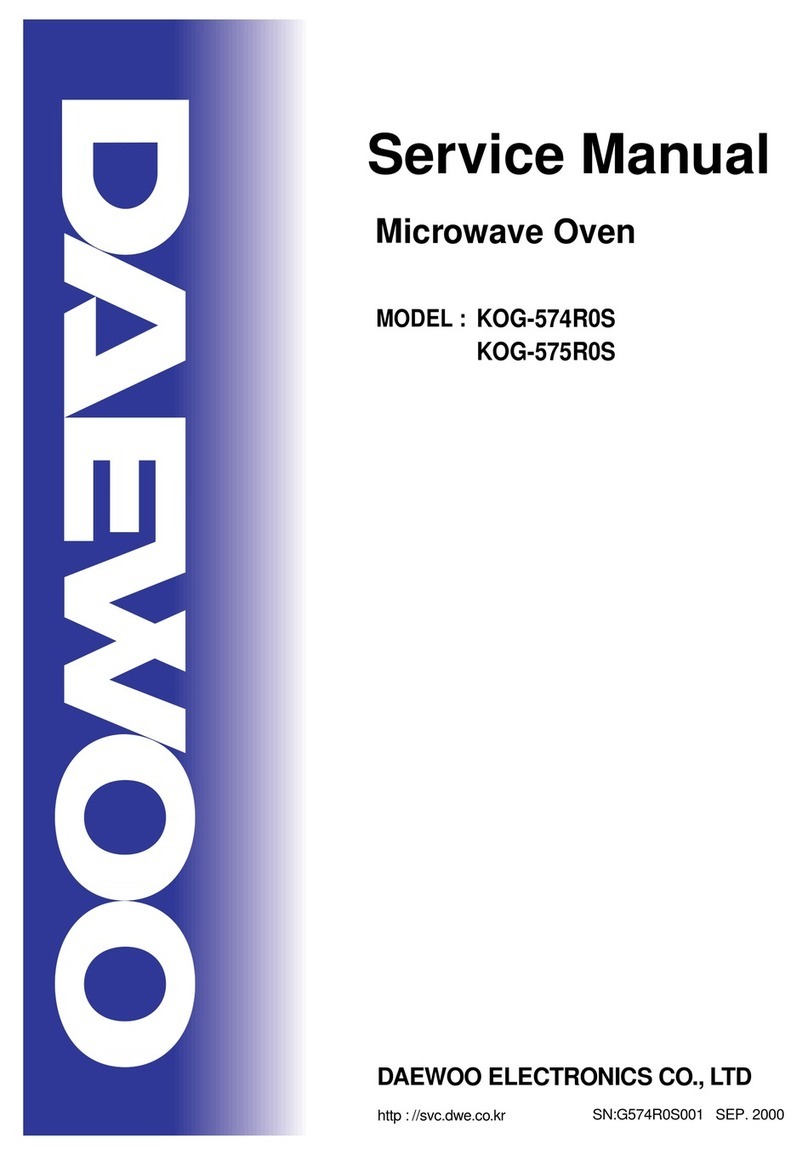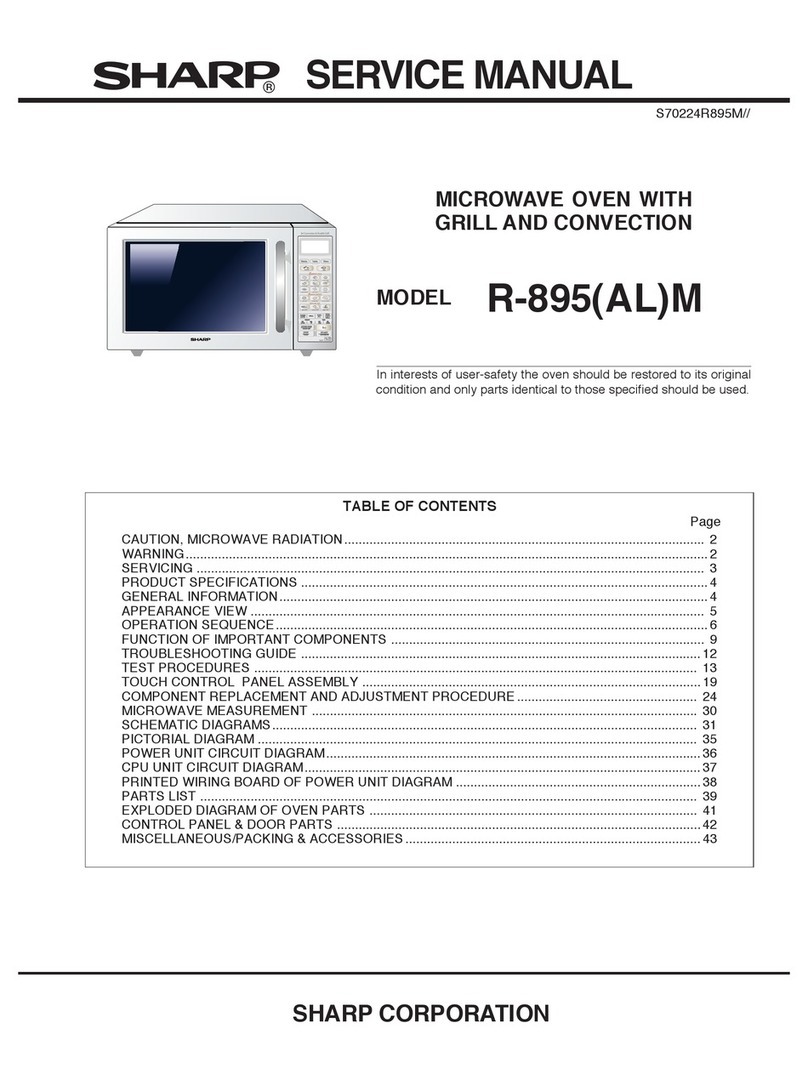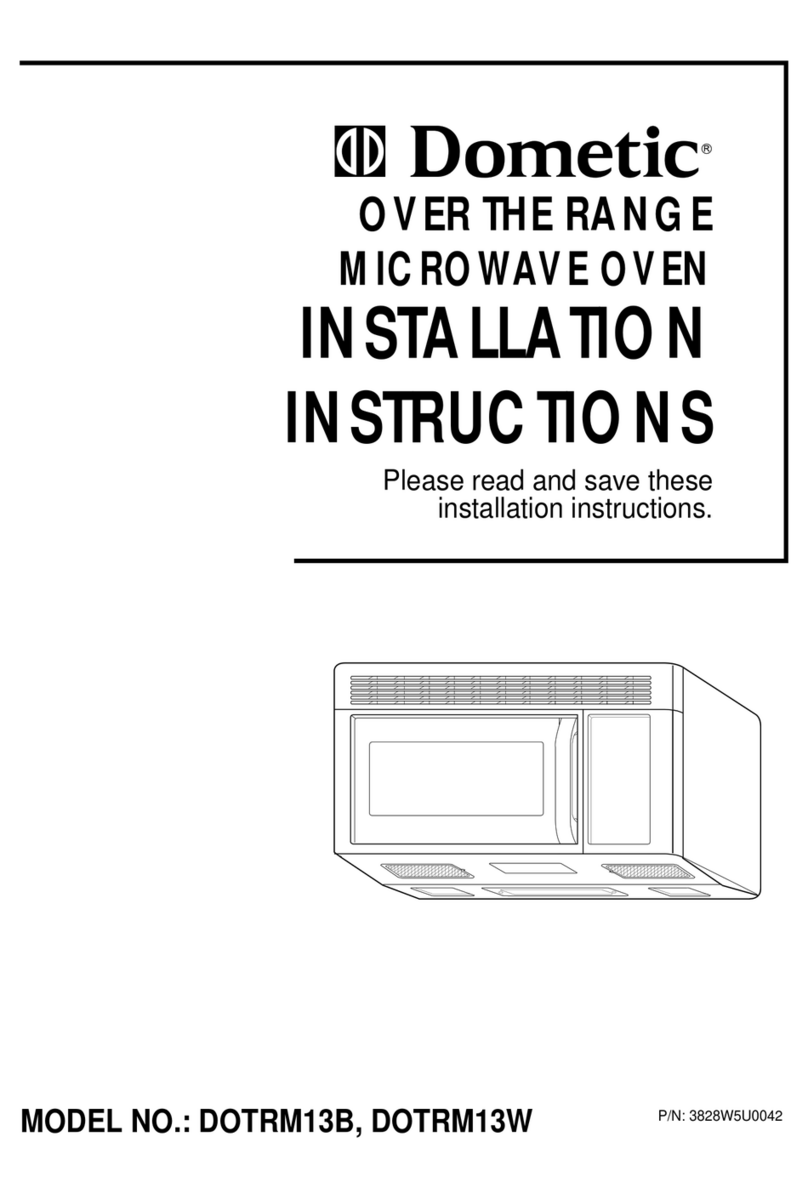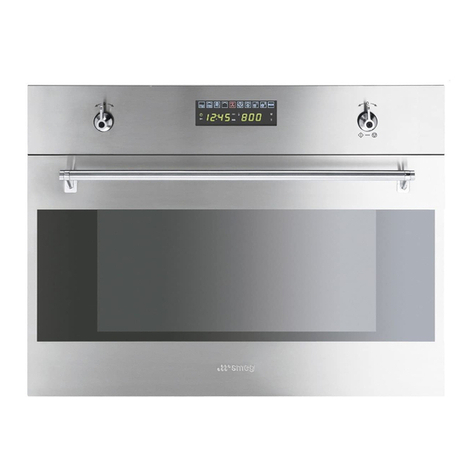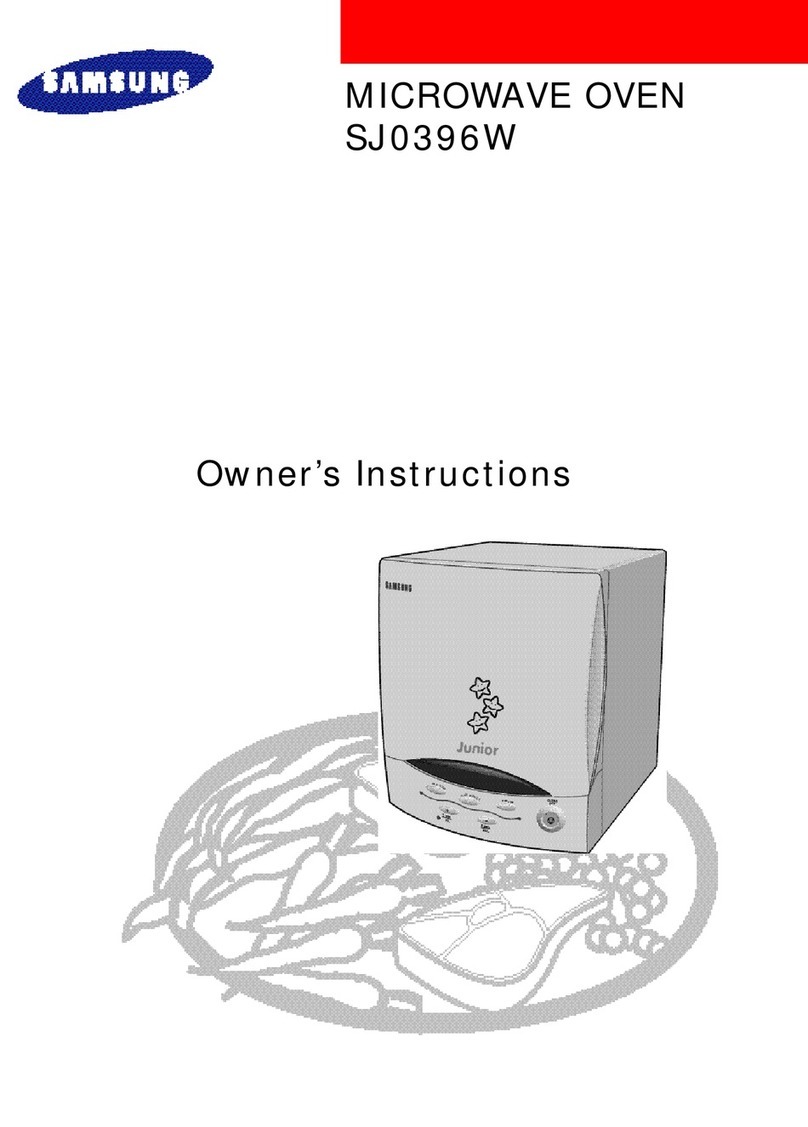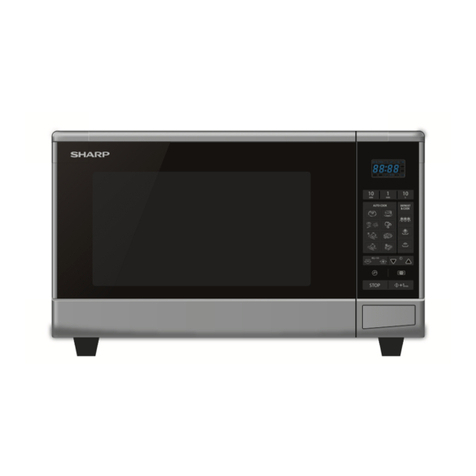IMPORTANT SAFETY INSTRUCTIONS .
(continued)
●Don’t defrost frozen bever-
ages in narrow neck bottles;
especially carbonated ones.
Even if the container is opened,
pressure can build up. This can
cause the container to burst,
resulting in injury.
●Use metal only as directed in
Cookbook. Metal strips as used
on meat, roasts are helpful when
used as shown in Cookbook.
TV dinners may be cooked in
metal trays. However, when
using metal in microwave oven,
keep metal at least l-inch away
from sides of oven.
●Cooking utensils may
become hot because of heat
transferred from the heated
food. This is especially true if
plastic wrap has been covering
the top and handles of the
utensil. Potholders may be
needed to handle the utensil.
●Sometimes, the oven floor
can become too hot to touch.
Be careful touching the floor
during and after cooking.
●Do not use any thermometer
in food you are microwaving
unless that thermometer is
designed or recommended for
use in the microwave oven.
●Remove the temperature
probe from the oven when not
using it to cook with. If you leave
the probe inside the oven without
inserting it in food or liquid, and
turn on microwave energy, it can
create electrical arcing in the
oven, and damage oven walls.
●Plastic Utensils—Plastic
utensils designed for microwave
cooking are very useful, but
should be used carefully. Even
microwave plastic may not be as
tolerant of overcooking condi-
tions as are glass or ceramic
materials and may soften or
char if subjected to short periods
of overcooking. In longer expo-
sures to overcooking, the food
and utensils could ignite. For
these reasons: 1) Use micro-
wave plastics only “and use
them” in strict compliance with
the utensil manufacturer’s
recommendations. 2) Do not
subject empty utensils to micro-
waving. 3) Do not permit children
to use plastic utensils without
complete supervision.
●When cooking pork follow
our directions exactly and
always cook the meat to at least
170°. This assures that, in the
remote possibility that trichina
may be present in the meat, it
will be killed and meat will be
safe to eat.
●Boiling eggs (in and out of
shell) is not recommended for
microwave cooking. Pressure
can build up inside egg yolk and
may cause it to burst, resulting
in injury.
●Foods with unbroken outer
“skin” such as potatoes, hot
dogs or sausages, tomatoes,
apples, chicken livers and other
giblets, and eggs (see above)
should be pierced to allow
steam to escape during cooking.
●“Boilable” cooking pouches
and tightly closed plastic bags
should be slit, pierced or vented
as directed in Cookbook. If they
are not, plastic could burst dur-
ing or immediately after cooking,
possibly resulting in injury. Also,
plastic storage containers should
beat least partially uncovered
because they form atight seal.
When cooking with containers
tightly covered with plastic wrap,
remove covering carefully and
direct steam away from hands
THE HOOD:
●Have it installed and properly
grounded by aqualified installer.
See the special installation book-
let packed with the microwave
oven.
●The vent fan in your Counter-
Saver’M oven will operate
automatically under certain
conditions (see Automatic Fan
Feature, page 7). While the fan is
operating caution is required to
prevent the starting and spread-
ing of accidental cooking fires
while the vent fan is in use. For
this reason:
—Never leave surface units
unattended at high heat settings.
Boilover causes smoking and
greasy spillovers that may ignite
and spread if vent fan is oper-
ating. To minimize automatic fan
operation, use adequate sized
utensils and use high heat set-
tings only when necessary.
—In the event of agrease fire,
smother flaming pan on surface
unit by covering pan completely ~
with well-fitting lid, cookie sheet
or flat tray.
—Never flame foods under the
oven with the vent fan operating
because it may spread the
flames.
—Keep hood and grease filters
clean, according to instructions
on pages 15 and 16, to maintain
good venting and avoid grease
fires.
SAVE THESE
INSTRUCTIONS
and face.
4
